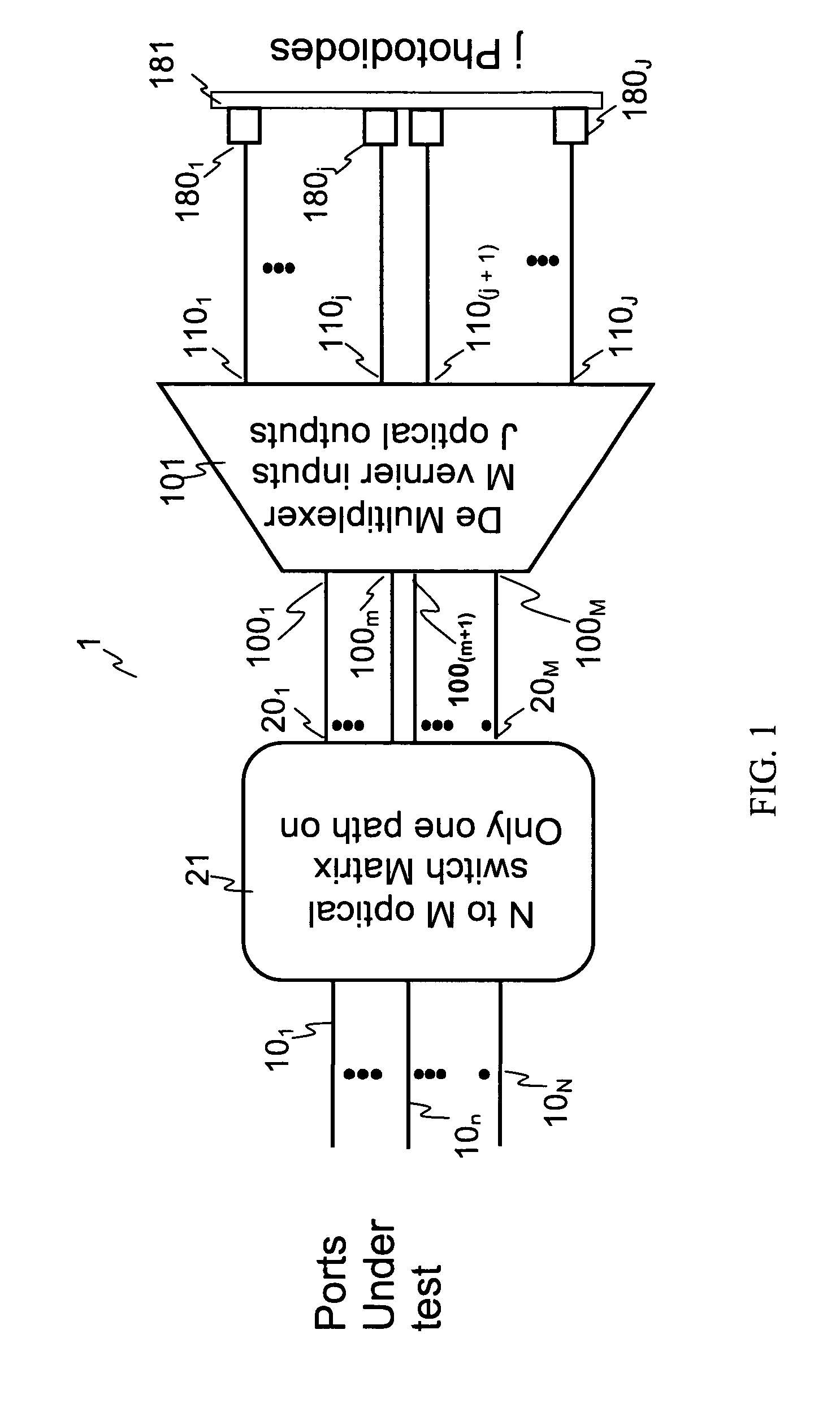Optical performance monitor
a technology of optical performance monitor and optical spectrum analyzer, which is applied in the field of optical devices, can solve the problems of affecting the cost and reliability of the monitor, being subject to stringent industrial requirements, and being bulky and expensiv
- Summary
- Abstract
- Description
- Claims
- Application Information
AI Technical Summary
Benefits of technology
Problems solved by technology
Method used
Image
Examples
Embodiment Construction
[0058]Exemplary embodiments of an optical apparatus for monitoring an input optical signal are shown in FIG. 1 and FIGS. 3–8 and are hereafter described.
[0059]With reference to FIG. 1, an apparatus 1 for monitoring an input optical signal at a first plurality of K distinct optical frequencies, K>1, has a dispersive element 101 disposed between N×M switching means 21 and monitoring means 181. The N×M optical switching means 21 hereafter are also referred to simply as switch 21, which can be embodied as an N×M optical switch matrix, or in other ways, examples of which will be described later in this specification. The switch 21 has N optical input ports 101 to 10N and M optical output ports 201 to 20M and has a functionality of controllably providing optical coupling between any input port to any one output port. The dispersive element 101 has M input ports 1001 to 100M, each of which is optically coupled to a different output port of the switch 21. The monitoring means 181 are prefer...
PUM
 Login to View More
Login to View More Abstract
Description
Claims
Application Information
 Login to View More
Login to View More - R&D
- Intellectual Property
- Life Sciences
- Materials
- Tech Scout
- Unparalleled Data Quality
- Higher Quality Content
- 60% Fewer Hallucinations
Browse by: Latest US Patents, China's latest patents, Technical Efficacy Thesaurus, Application Domain, Technology Topic, Popular Technical Reports.
© 2025 PatSnap. All rights reserved.Legal|Privacy policy|Modern Slavery Act Transparency Statement|Sitemap|About US| Contact US: help@patsnap.com



